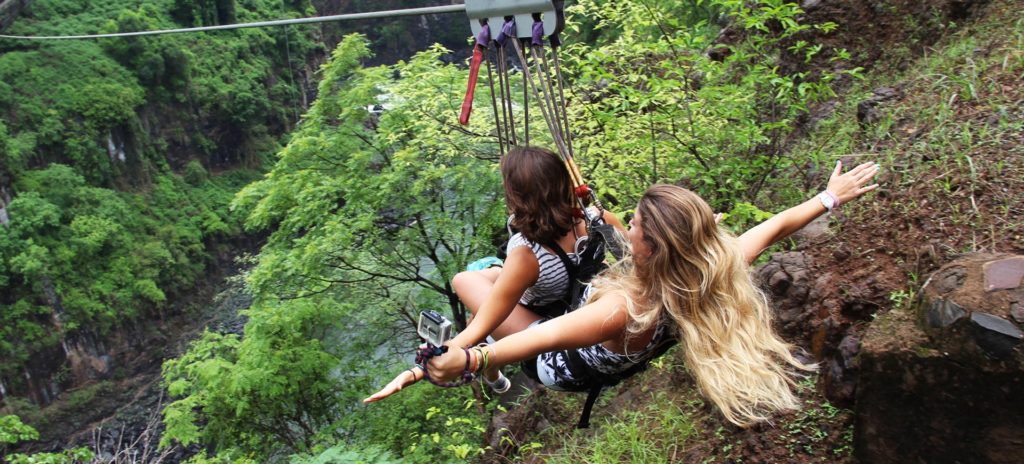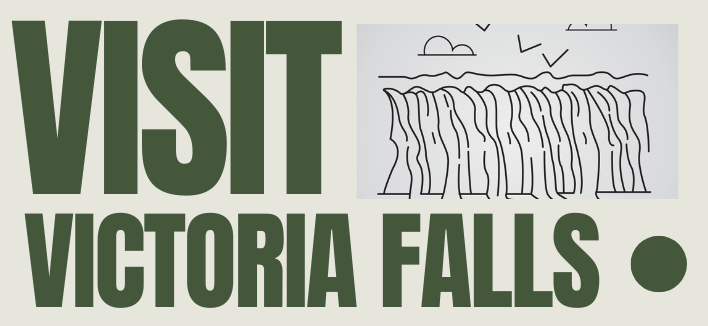Intriguing Facts About Victoria Falls in Zimbabwe and Zambia.
Intriguing Facts About Victoria Falls in Zimbabwe and Zambia : As a UNESCO World Heritage Site, the Victoria Falls are regarded as one of the world’s ten wonders. They act as a barrier that splits the upper and lower sections of river Zambezi. Even though the Zambezi River is still located in “no man’s land,” it aids in defining the border between Zambia and Zimbabwe. In 1855, missionary and explorer David Livingstone became the first person from Europe to find the Victoria Falls.

It is significant to remember that African tribes had been residing in the region for countless years prior to Livingstone’s arrival. Fossils and tools found by archaeologists indicate that Homo habilis, the ancestors of modern humans, lived in the vicinity of the falls approximately 3 million years ago. These block age people where replaced by the Batoka. The Matebele and Makolo tribesmen eventually joined the Batoka, and their descendants are still living in the region today. The local tribes had a great fear of the falls and few dared approach them closely. Of all the local soldiers escorting David Livingstone, only two were brave enough to go with him close to the falls. The local tribes haven’t really explored the falls much because of this fear. The falls gained great popularity among the locals only after a railway line was built to pass near to them.
How long are the Victoria falls in Zimbabwe and Zambia?
The Victoria falls are the largest volume of falling water on earth. In North America, the Victoria Falls are twice as tall as the Niagara Falls. The Iguazu Falls in Brazil and Argentina are the largest and most similar to the Victoria Falls. You can see the mist from the falls from more than fifty kilometres away, and forty kilometres away is where you can hear the sound of the thundering water. The locals refer to it as Mosi-oa-Tunya, which means “smoke that thunders,” because of this. The falls have a combined width of 5,604 feet and a height of 354 feet.
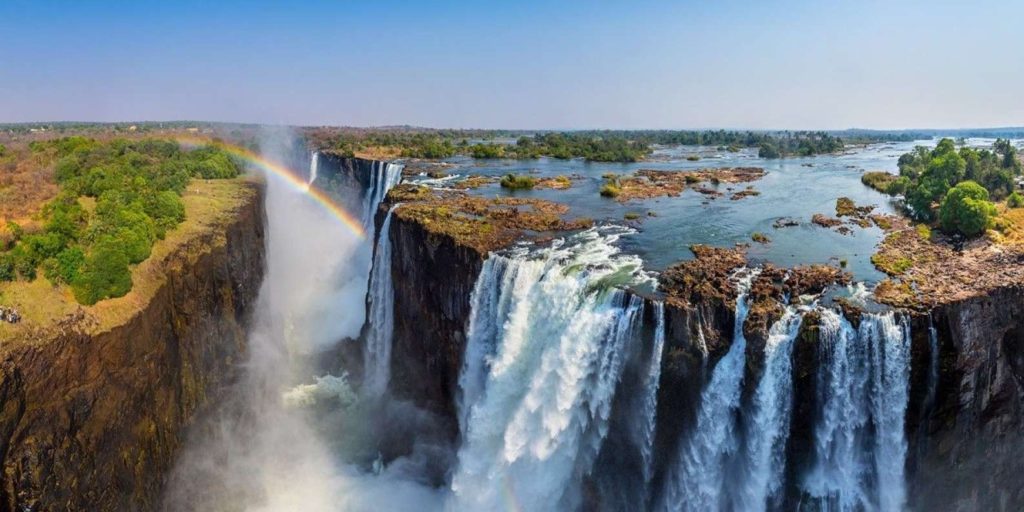
When the rainy season, the water and spray (from the falls) increase in magnitude and it becomes difficult to see its whole face and foot. It’s possible to get a closer look at the rocky face and explore the bottom gorges after the floods pass and the dry season begins. Situated at the brink, where the water starts to plummet, is the “Devil’s Pool,” one of the most well-known features of the falls. Despite the possibility of falling over the edge, countless tourists brave the risk of swimming in this specific area. During the dry season, which runs from September to December, when the water current’s force is at its lowest, this pool is only accessible. All activities above the falls are halted during the rainy season because the current gets too dangerous.
Every year, more than one million people visit the Victoria Falls. A safari in Africa is incomplete without visiting this mighty work of nature. It’s debatable whether or not the Zimbabwean side of the falls provides superior sightings. Political tensions and international sanctions during the reign of Robert Mugabe made many tourists to go to the Zambian side as the starting point for a tour of the falls.
Activities to do in Victoria Falls Zimbabwe and Zambia.
In addition to seeing the falls, there are interesting safari activities to do in the vicinity. The falls are located in national parks on the borders of Zimbabwe and Zambia. Near the falls are other national parks where visitors can see antelopes, lions, elephants, giraffes, buffaloes, cheetahs, crocodiles, hippopotamuses, leopards, zebras, primates, and birds, among other well-known African mammals. Despite whether you are staying on the Zambian or Zimbabwean side, you can also combine viewing the waterfalls with bungee jumping, whitewater rafting, zip lining, kayaking, fishing, boat cruises, canoeing, horseback riding, nature walks and so much more. Remember that the activities you choose depend on the season you are visiting. The activities in river Zambezi are best done when the water levels are low and the current not so strong. We advise visiting during the rainy season if this is your only trip to the falls in order to experience the full force of the waterfalls. The activities are as follows:
Seeing the waterfalls and walking along their footpaths.
This is clearly the biggest draw in the area. You can view the world’s largest waterfall from both the Zambian and Zimbabwean sides. The falls are situated in Zimbabwe’s Victoria Falls National Park, and activities at Victoria Falls Mosi-oa-Tunya National Park is the name of the park on the Zambian side. While you can see the falls from either side, the experience varies slightly depending on which side you choose to view from. The scenery and views of the falls are better on the Zimbabwean side. You may walk through the lovely rain forests at various viewpoints while in Zimbabwe. Four of the falls’ principal sections Horseshees Falls, Main Falls, Rainbow Falls, and the Devil’s Cataract can be seen from the Zimbabwean side. Located on the Zambian side, the Eastern Cataract is the second-deepest waterfall. It is crucial to note that one can easily cross the border between Zimbabwe and Zambia via the Victoria Falls Bridge just don’t forget your passport and prepare to pay a Visa fee.
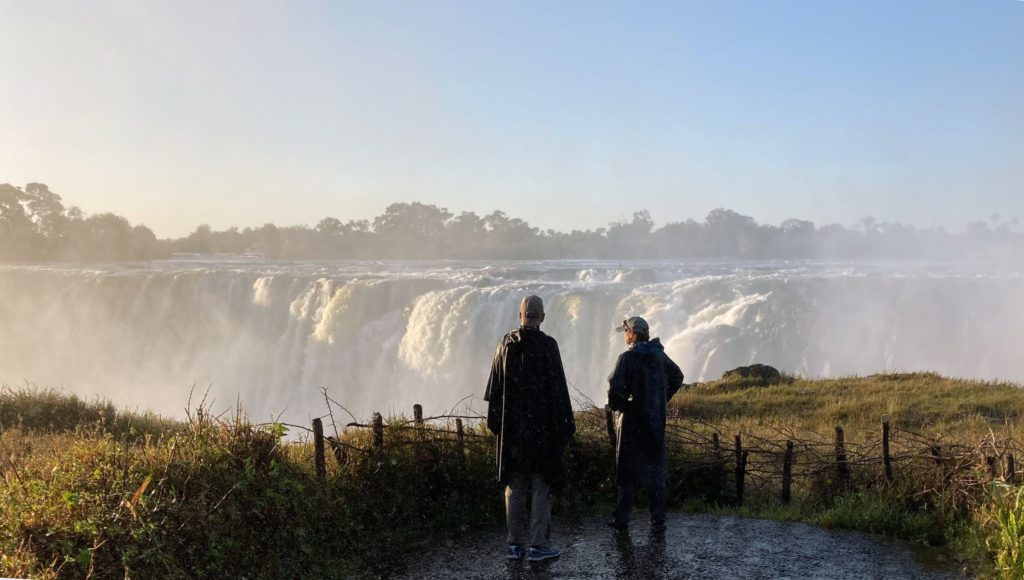
Seeing Victoria Falls Bridge.
This is the bridge that connects Zambia to Zimbabwe. This famous bridge took fourteen months to be built. It was completed in 1905 and since then has undergone several renovations. The bridge has a fascinating history that you will learn from an official Guide while on an activity known as the “The Historic Bridge Tour”. Depending on the season, you could even get an opportunity to walk under the bridge to see the full depth of the Botoka Gorge or see the rainbow formed by the mist/spray from the Victoria Falls.
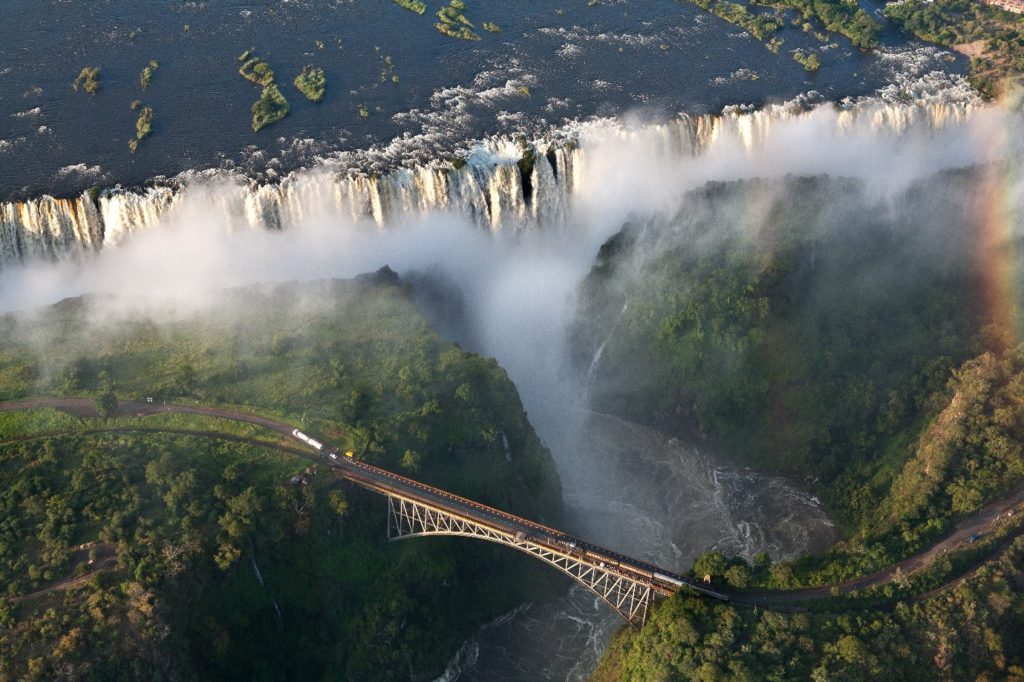
Exploring Knife Edge Bridge.
This bridge is found on the Zambian side of the border. Because it takes you above the deepest gorge on the Zambian side, it’s a great place to visit during the rainy season. You will have the chance to approach the moving water and feel the spray directly onto your face.
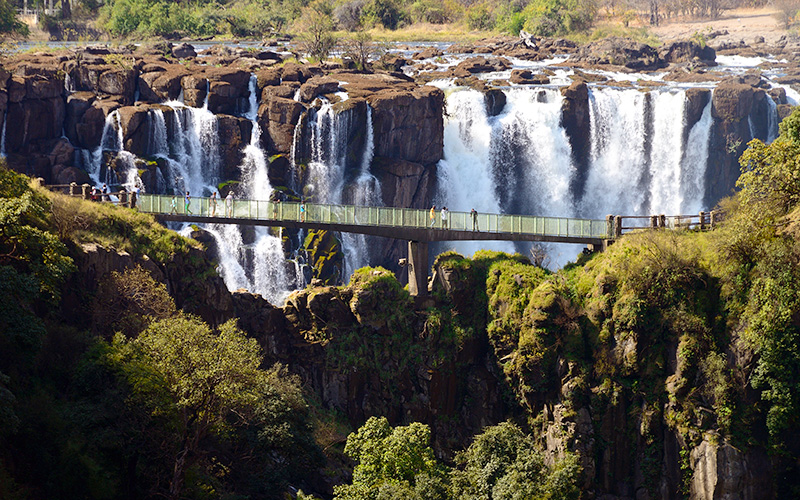
Swimming from Devil’s pool.
After touring the island, the next thing is to take a dip at the famous Devil’s pool. You have to swim upstream from the island to the pool, where you must emerge through a few rocky areas. The pool is naturally deep and was formed over thousands of years by a slow process of erosion. Just at the edge of the falls is a rocky ledge that serves as a safety barrier to prevent you from being carried away by the current. Extra precautionary ropes fastened to swimmers. Only in the dry season (late June to early March), when the risk of flooding and currents has decreased, is this specific activity feasible.
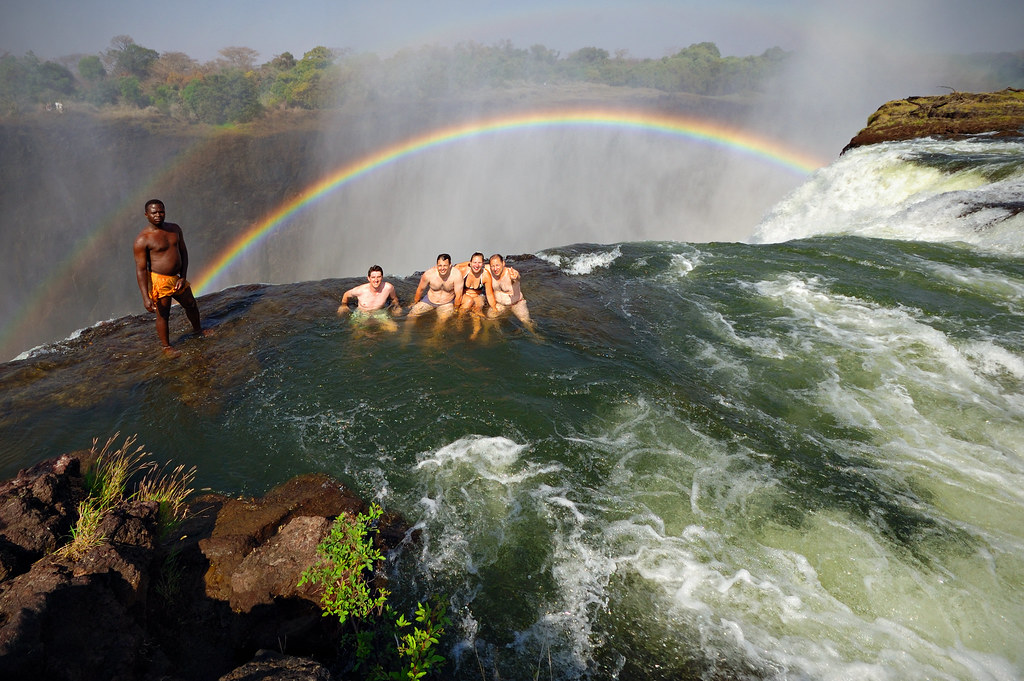
Exploring Chobe National Park.
If you want to take in an African safari experience along with your tour of the Victoria Falls, then you should consider Chobe National Park in nearby Botswana. After visiting the falls, a safari in Chobe National Park is a great option. Africa’s largest concentration of elephants is found in this park. A tour of the park includes a safari along a river and another on land to see the big four mammals of the big five animals of African in a standard tour van.
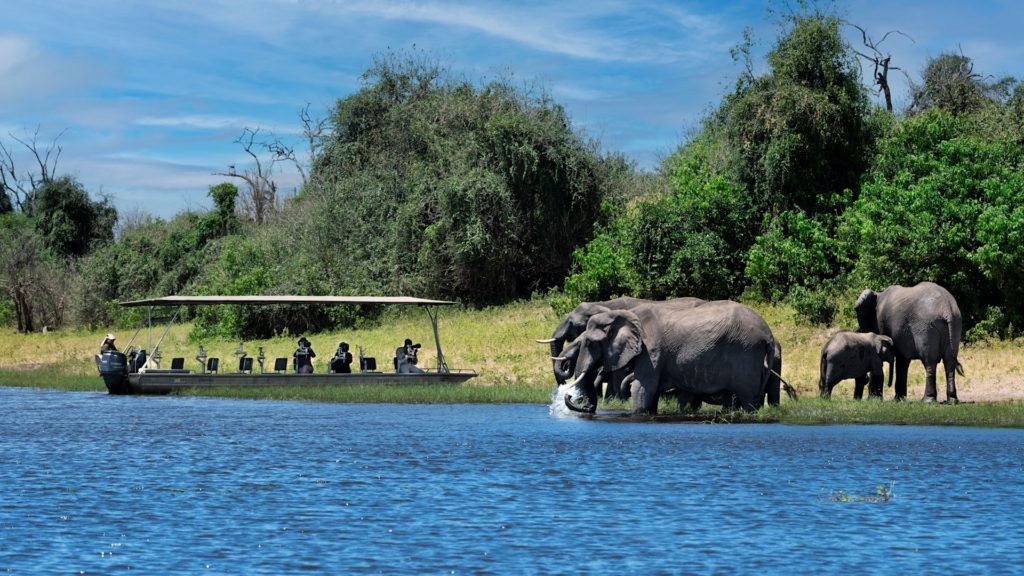
Go to the Market in Shearwater Village.
This is a wonderful place to go on the Zimbabwean side if you are intrigued in buying local souvenirs. It is constructed to exacting standards in an effort to draw in as many visitors as possible.
Exploring Hwange National Park.
This is the most extensive national park in Zimbabwe and covers an area of about 15,000 square kilometers. With over 29,000, the park is home to more elephants than Chobe National Park. Buffaloes, leopards, rhinos, lions, sable and roan antelopes, and endangered wild dogs are among the other animals that tourists may see.
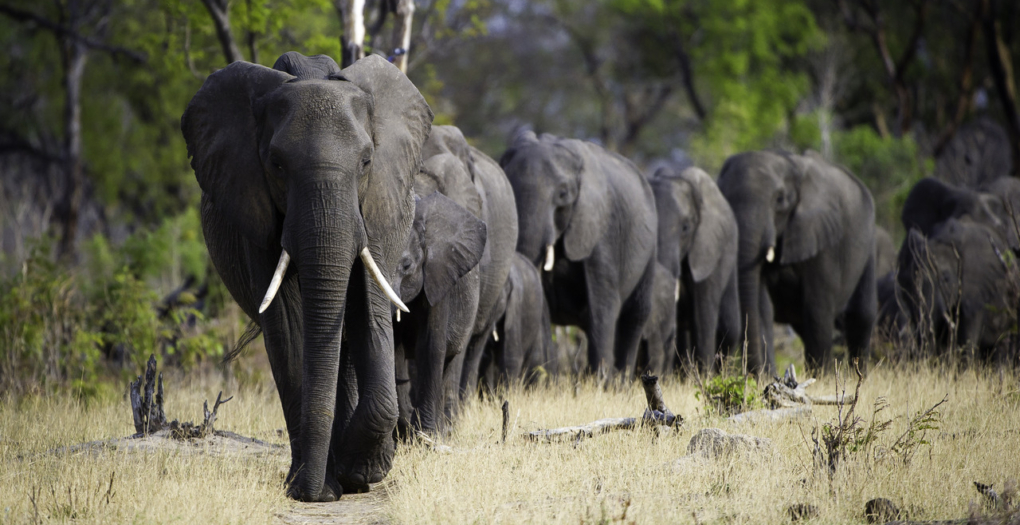
Whitewater rafting.
The River Zambezi has a number of grade 5 rapids that provide thrill-seekers with a chance to get up close and personal with the majestic falls. One of the most exhilarating and daring experiences of a lifetime is whitewater rafting. The time required for the activity varies based on the season. Large amounts of water are brought by the rainy/wet season, suggesting that some of the rapids get too dangerous. On the other hand, if you arrive at the appropriate time, you should anticipate an incredible and extended experience. As you relax at the more serene sections of the water, you will be able to enjoy stunning views of the gorge and the surroundings.
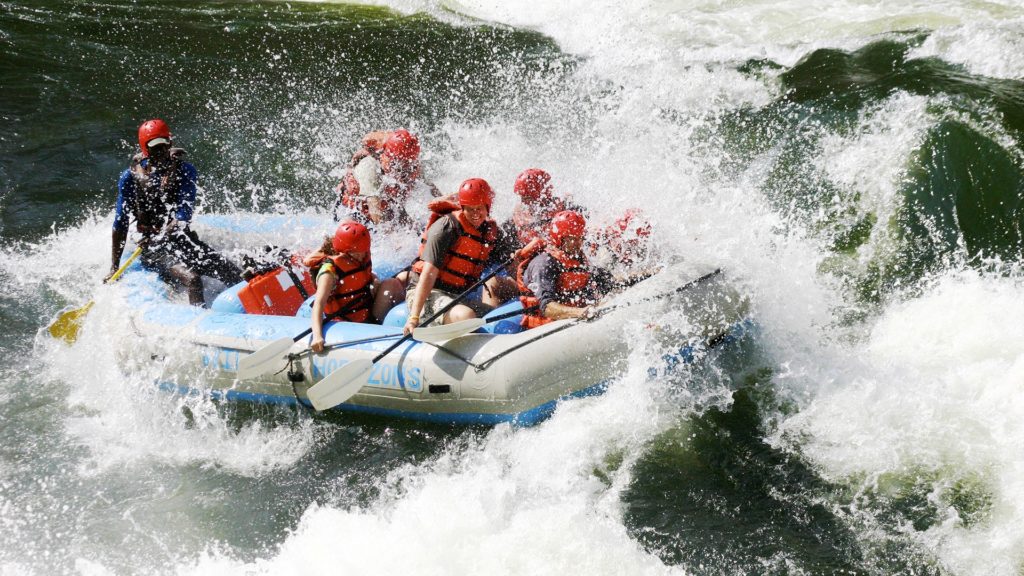
Helicopter Flights on top of the falls.
This 15 minutes’ flight may be costly but will offer you a bird’s view of the falls and help you cherish the magnitude of the falls. Further down the Zambezi, you will be able to see the mist, Batoka Gorge, towering cascades, and wildlife. You can opt for a longer 25 minutes’ flight to see more of the waterfalls and the Zambezi National Park. When close sight from the ground becomes difficult during the wet season, the helicopter flight option becomes particularly appealing.
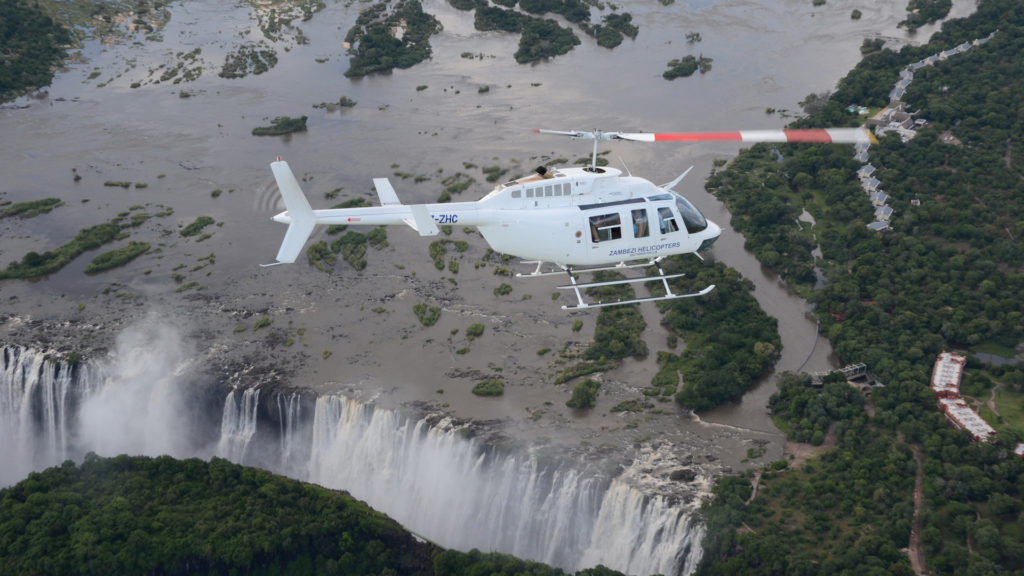
Sunset Tours by boat.
A Sunset boat cruise is a great opportunity of accomplishing your tour of the falls. This tour takes place at dusk on a cruise boat down the Zambezi River. During the tours you can be provided with plenty of snacks, alcohol, and other beverages available. The tranquilly of the Zambezi River can be greatly enjoyed by boat cruise. Numerous animals, including baboons, crocodiles, elephants, hippos, ververt monkeys, and birds, are likely to be encountered. As you take in the natural beauty of the Zambezi River, get ready to snap some incredible pictures of it.
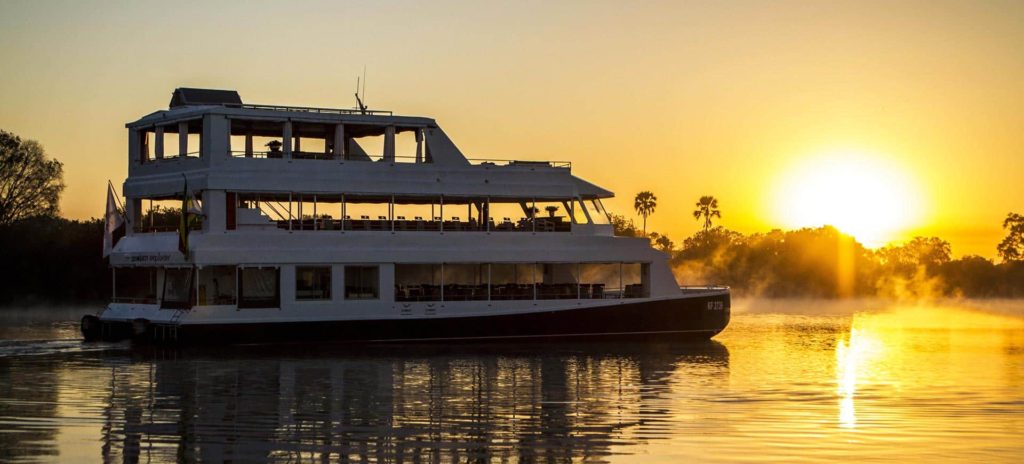
Bungee Jumping.
The Victoria Falls Bridge offers some of the best bungee jumping safari experiences available. It entails leaping 111 metres from the bridge into the nearby waterfalls and the powerful Zambezi River. Instructors then fit jumpers with body and ankle harnesses, and you’re encouraged to jump calmly from there. You will fall freely for roughly 4 seconds after jumping. After the four seconds, you will be securely but gently restrained by the elastic harness/rope until you are picked up and transported downstream on a boat. There are fantastic views of the river and the surroundings from the jumping point.
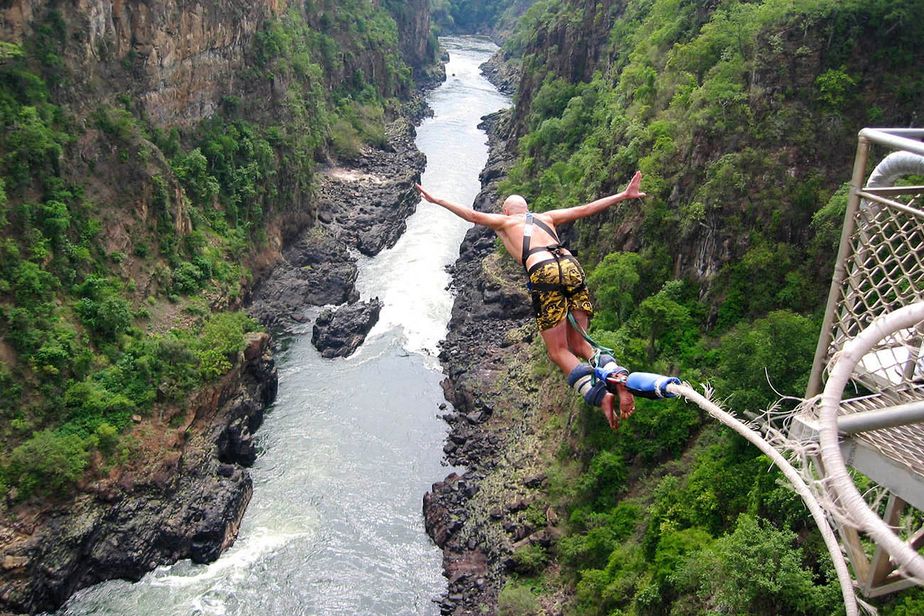
Take a steam train across the bridge.
For the better views of the waterfalls, you can take a ride on a restored steam train. After restoration, the train was outfitted with comfortable seating, leisure spaces, and dining areas. You can travel to the Zambezi National Park and across the falls on the train. Seize the chance to take beautiful pictures of the falls while you’re on the train.
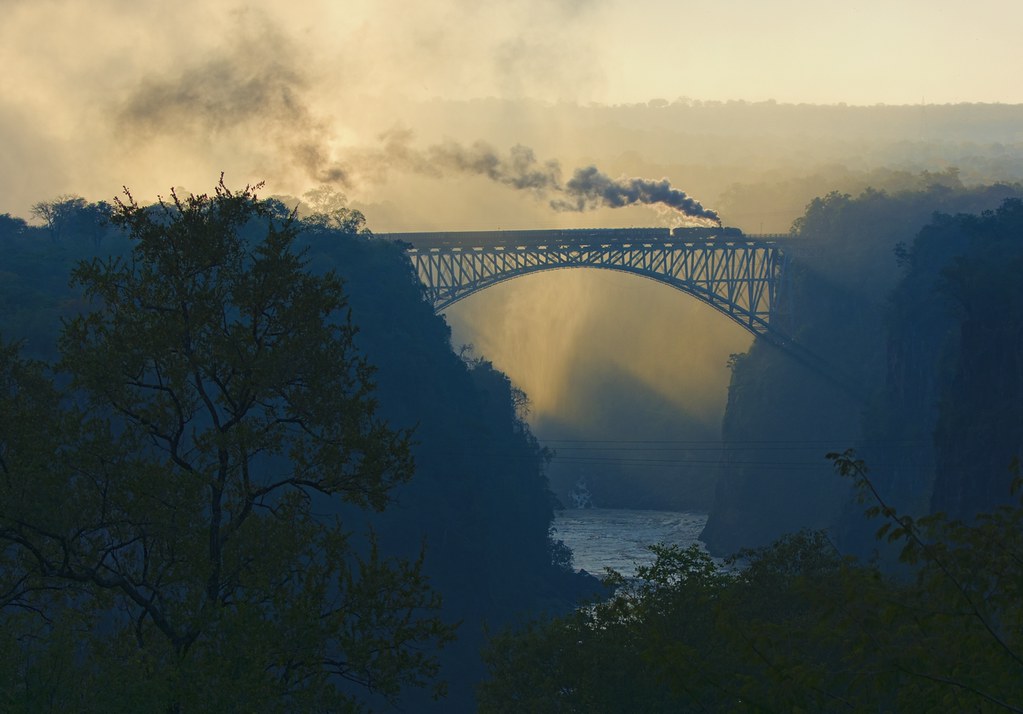
Gliding by the Victoria Falls Bridge.
If you are not courageous enough to do bungee jumping, then this is the one for you. Starting from a platform on the Zambian side of the bridge and continuing all the way to the Zimbabwean side, participants glide gently along a 300-meter zip line. As you slide near the gorge, you’ll be treated to breathtaking views of the falls. Young children can do this activity with an adult watching them closely.
